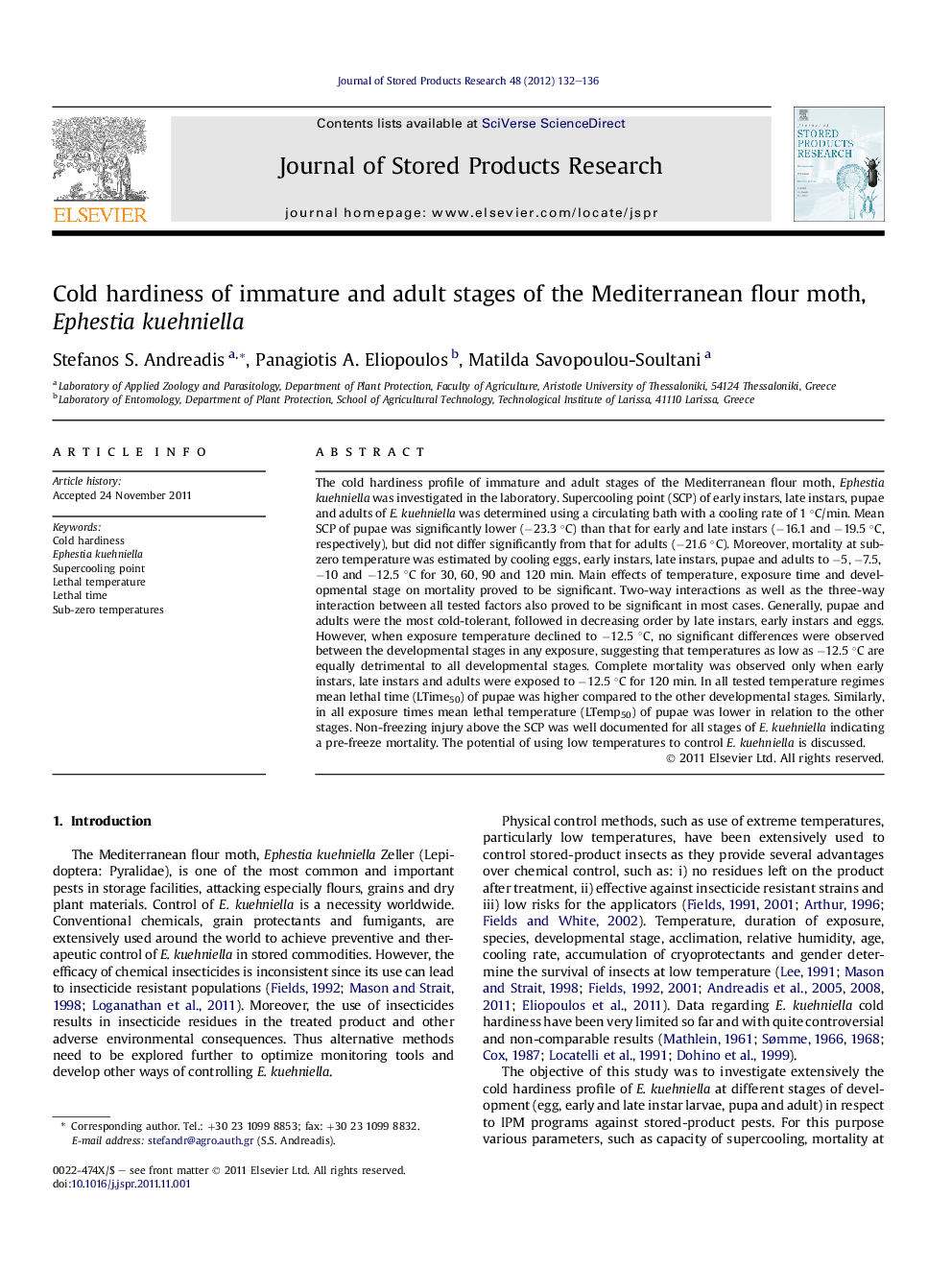| کد مقاله | کد نشریه | سال انتشار | مقاله انگلیسی | نسخه تمام متن |
|---|---|---|---|---|
| 4517287 | 1624940 | 2012 | 5 صفحه PDF | دانلود رایگان |

The cold hardiness profile of immature and adult stages of the Mediterranean flour moth, Ephestia kuehniella was investigated in the laboratory. Supercooling point (SCP) of early instars, late instars, pupae and adults of E. kuehniella was determined using a circulating bath with a cooling rate of 1 °C/min. Mean SCP of pupae was significantly lower (−23.3 °C) than that for early and late instars (−16.1 and −19.5 °C, respectively), but did not differ significantly from that for adults (−21.6 °C). Moreover, mortality at sub-zero temperature was estimated by cooling eggs, early instars, late instars, pupae and adults to −5, −7.5, −10 and −12.5 °C for 30, 60, 90 and 120 min. Main effects of temperature, exposure time and developmental stage on mortality proved to be significant. Two-way interactions as well as the three-way interaction between all tested factors also proved to be significant in most cases. Generally, pupae and adults were the most cold-tolerant, followed in decreasing order by late instars, early instars and eggs. However, when exposure temperature declined to −12.5 °C, no significant differences were observed between the developmental stages in any exposure, suggesting that temperatures as low as −12.5 °C are equally detrimental to all developmental stages. Complete mortality was observed only when early instars, late instars and adults were exposed to −12.5 °C for 120 min. In all tested temperature regimes mean lethal time (LTime50) of pupae was higher compared to the other developmental stages. Similarly, in all exposure times mean lethal temperature (LTemp50) of pupae was lower in relation to the other stages. Non-freezing injury above the SCP was well documented for all stages of E. kuehniella indicating a pre-freeze mortality. The potential of using low temperatures to control E. kuehniella is discussed.
► In this study we investigated the cold hardiness profile of Ephestia kuehniella.
► Non-freezing injury above the SCP was well documented for all stages.
► Temperature, exposure time and developmental stage affected significantly mortality.
► Pupa is the most tolerant stage after exposure to sub-zero temperatures.
► Egg and early instar are the most susceptible stages to sub-zero temperatures.
Journal: Journal of Stored Products Research - Volume 48, January 2012, Pages 132–136